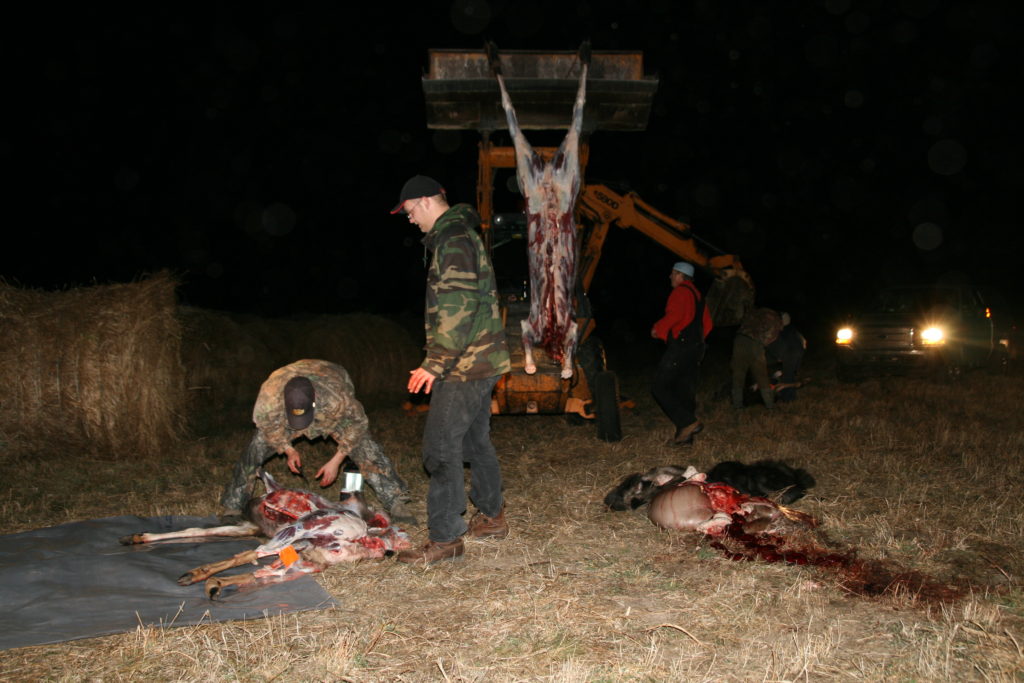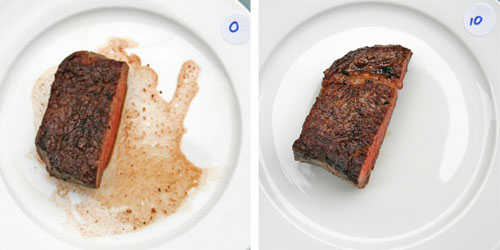We were lucky enough to fill our freezers this year with wild game after a successful hunting season and that has allowed us the opportunity to share some of that bounty with friends and family.
Unsurprisingly, a lot of people don’t have much, if any, experience cooking with wild game and there are a few things to know. Before I get to that, I’d like to touch base on why some people think they don’t like wild game, specifically, that “gamey” flavour.
Wild game can be extremely variable in its quality and flavour. There are so many factors that influence the final outcome from the diet of the animal, the age, sex, health, time of year it was shot, where it was hit, whether or not it was stressed at the time of death, how thoroughly it was bled out, how quickly the animal was gutted, skinned, cooled down, how clean the carcass was kept, how long it was aged for (and how well temperature and humidity were controlled during ageing), the way in which it was cut up, packaged, frozen, thawed, and finally, the way in which it was cooked.

We strive to honour the animals we kill by ensuring that each step is carried out with diligence. The result is wild game that can’t be beat. We have converted many people who thought they didn’t like game meat. In fact, we have even converted a few vegetarians.
Back to the subject at hand, game meat is different than beef and other agricultural meat products. The most important difference between beef and venison is the fat content and distribution. Beef is graded in part based on the marbling of fat within the meat, in wild game you will see next to no marbling. This is actually for the best because as a general rule, wild game fat is terrible. Both the flavour and texture are undesirable and it’s the first thing to go bad in the freezer. With that in mind, when we cut meat we break everything down to individual muscles or small muscle groups and we remove every bit of fat that we can.
Because the fat content is so low in game meat there are some things to keep in mind when cooking it. Game meat has a tendency to be dry so taking some steps to re-introduce fat into a dish is often a good approach and who doesn’t like bacon wrapped everything? Braises and stews are also a good option to keep things moist and also a great way to use lesser cuts where connective tissue breaks down and actually enhances the dish and makes it more unctuous.
While we do our best to minimize the “gaminess” of our wild game, it does tend to have a bit more flavour than beef or pork. As such it can stand up to stronger flavours in a dish. Game meat tends to go well with juniper berries, cubeb, red wine, beer of every description, spruce buds, rosemary, citrus, chillies, dark berries (blueberries, blackberries, grapes, cherries), coffee, onion, garlic, mushrooms, curry spices, cumin, coriander, cinnamon, allspice, smoked paprika, wood smoke etc. (though not necessarily altogether!)
That said, if you have a marinade, or spice rub or a flavour profile that works well with beef or lamb, it will almost certainly work well with venison. Alternatively, keep it simple, a good venison steak nicely seasoned with salt and pepper can be perfection.
If you are grilling or roasting game this is the single most important thing to know; it is best cooked to medium-rare and definitely not beyond medium as it will quickly get dry and tough. Many people judge the “doneness” of their meat with the finger test, i.e. by giving it a poke. If that’s your style it is important to know that because game meat is so lean and dense, the pressure test is a little bit different. What feels like medium-rare for a piece of beef might be closer to rare for a piece of venison, likewise, what feels like medium for a piece of beef might be closer to medium-rare for a piece of venison, and so on. Because of the lower fat content venison tends to cook faster than beef so keep that in mind too. Your target temperature should be between 125F and 145F depending on whether your want it to be closer to rare or medium.
Finally, rest your meat! This goes for beef, pork and poultry too. After getting your meat off the grill, cover it in foil and let it rest for up to 50% of the cooking time, in order to let the muscle fibres relax and the juice to redistribute throughout the meat (instead of running out onto your plate/cutting board).

If you are cooking up a larger piece of game meat, it’s typically best to cut it thinly before serving as thicker slices have the potential to be on the tougher side, additionally, thinner cuts have larger surface area which means more flavour. Whether you are cutting up a larger piece into steaks, or thinly slicing a large piece of meat in order to serve, always cut across the grain.
One last consideration when it comes to serving wild game; a little goes a long way. Compared with beef, wild game is virtually fat free (especially the way we cut it), lower in cholesterol and saturated fats, more nutritionally dense and has more protein and iron per gram, as well as being higher in vitamin B6, B12, riboflavin, niacin, and Omega 3 fatty acids. Typically a 4 ounce serving should be sufficient though I wouldn’t blame you for wanting to eat more in a single serving!
Check out this great table summarising the protein, fat and calorie content of different types of meat using data sourced from the USDA and Outdoor Life: http://juxtable.com/meat-protein-comparison/
In addition to being nutritionally superior, it’s naturally hormone, steroid, antibiotic and pesticide free, it’s more ethical than farm raised meat, it’s better for the environment, and hunters are the single largest contributor of conservation dollars. What more could you ask for?
If you have any specific questions about cooking wild game feel free to ask and I’ll do my best to answer. Sorry for the novel, hopefully someone finds it helpful.
Update: I neglected to mention that you can soak wild game in buttermilk or water and potentially change it out from time to time in order to reduce the amount of blood in the meat and therefore the gaminess. We don’t do this because we have never found it to be necessary but it’s another tool at your disposal if you are so inclined.


This is awesome Kyle and very timely – was looking at the cut of venison in the freezer just two days ago!
Perfect, let me know what you come up with. I’m always eager to try new things or just to hear that it was enjoyed (hopefully).
That was really great info! Thanks. I’m forwarding to Sandy. We are newbies.
Right on, it’s my pleasure to be able to share some wild game and what makes it so special to us. I’m sure you can relate with all the spectacular seafood you harvest.
Thanks for all the tips on wild game Kyle. Loren gave Peter and I a good portion of some of the elk and moose you got this fall – we even helped him butcher some of it under his direction! I made some osso bucco with the shanks – fabulous. I had made a gamestock wih lots of the larger leg bones before and got about ten litres!! It did the osso bucco proud!
Nice. Up until two years ago I used to hate the shanks because we would break them right down and remove nearly all the connective tissue (of which there is a lot) in order to prepare it to be run through the grinder.
I have since learned the errors of my ways, cooking the shanks low and slow (really slow) breaks down the connective tissue and actually makes for a superior dish! So many hours of trimming wasted and so many shanks through the grinder that I should have turned into osso bucco instead!
I made bone in osso bucco for the first time last November and it turned out beautifully.
I haven’t used venison bones to make stock before but just this winter I have decided that I’m going to try it out next year. I’m curious to know how yours turned out.
All of this talk about venison is giving me some ideas for a follow up blog post on what to do with venison…